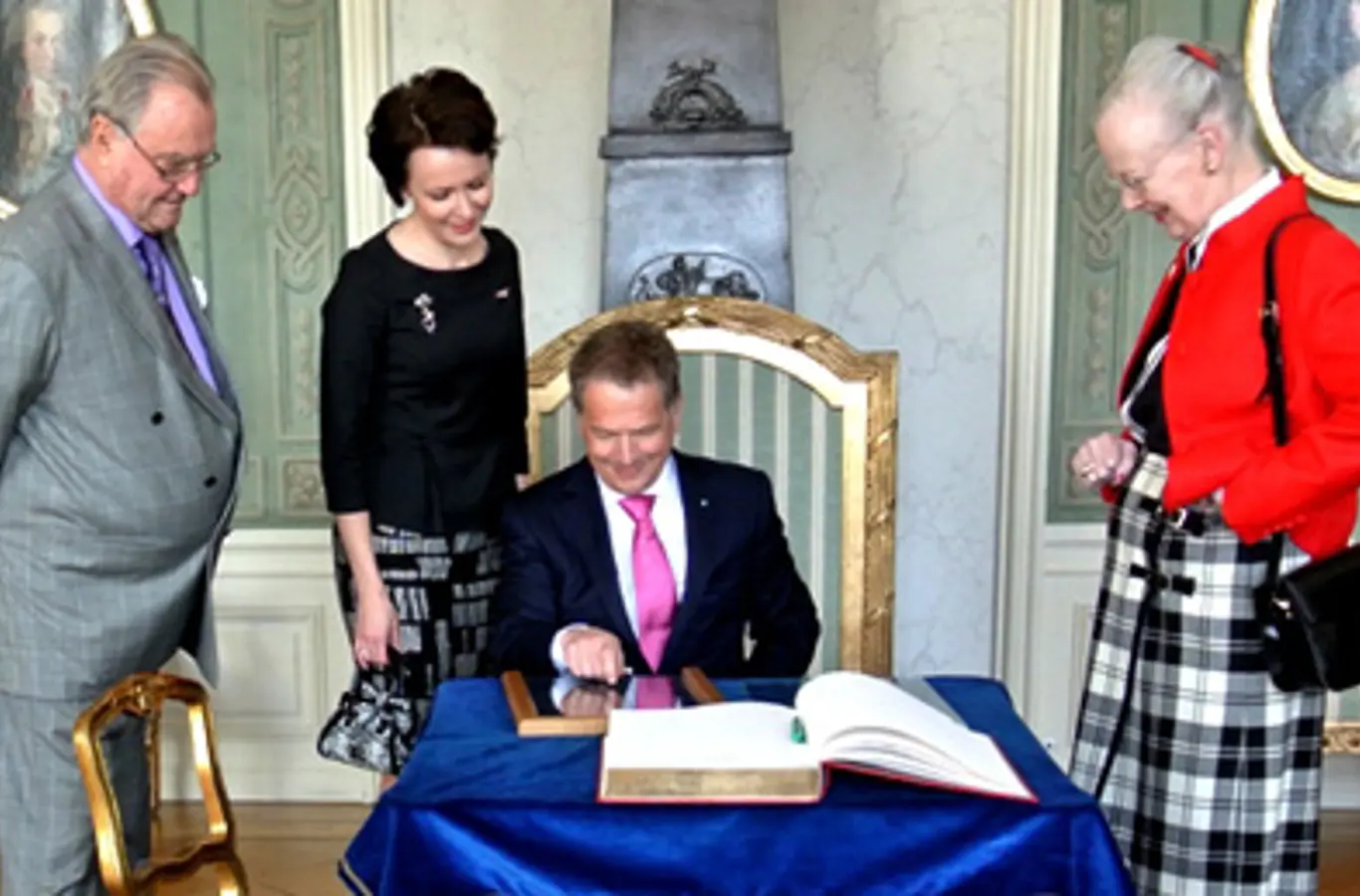President signs window pane

In connection with the recently-concluded state visit from Finland, The President and The First Lady followed a more than 150 year-old custom of signing one of the window panes at Fredensborg Palace on Friday, 5 April.
From the start, the custom has been reserved for guests of princely rank or heads of state on both private and official visits.
A large number of names have been inscribed through the years. A sense of how many is given in the preserved “Register of Glass Panes in Fredensborg Palace signed by Royal Persons” (started in 1916), which counts 239 panes with inscriptions.
Since many of the panes hold more than one signature, the whole total is at least two to three, maybe more, times as large. They are now on panes distributed over a large part of the palace, not least in the Garden Hall, the Prince’s Salon, the Guards’ Hall and various bedrooms. As a whole, the palace’s windows thus make up a gallery of signatures from previous and current members of the Danish Royal Family and other persons associated with it, and a collection of names of prominent and, in many instances, also historically significant persons in Denmark and from other countries through the past 150 years.
The custom can be traced back to 1841, when Louise of Hessen scratched the oldest dated signature on 17 August of that year. The year after, she married Prince Christian of Glücksborg, who in 1863 became Denmark’s King Christian IX, and his large family accounts for most of the oldest signatures. Thus, it’s from the 1860s that signatures on the window panes became an established custom, which with varying intensity has been kept to this day.
In themselves, the inscriptions are mostly simple and often include just a name and perhaps a date. Nevertheless, these signatures and dates can go beyond just documenting the presence of the person concerned and, in many instances, give a hint of a larger story.
Among the earliest inscriptions, one can find, for example, Nikolaj and Dagmar, who on 9 and again on 29 October 1864 left a reminder of a connection that came to nothing but nevertheless had dramatic consequences. The aforementioned Nikolaj, Tsar Aleksander II’s oldest son, became engaged the month before to Princess Dagmar of Denmark, whom he would have married if he had not died the following year. Instead, in 1866, Dagmar married Nikolaj’s younger brother, Aleksander, who in 1881 became Tsar Aleksander III.
Not all of the inscriptions are just signatures and dates. Some are also the type of scribbling one can find in more conventional guest books: more or less legible doodles, scrawls, small figures, and poems. Many of them give proof that the writer must have appreciated his or her stay at the palace, such as Princess Ingeborg, for example, who wrote: ‟Was again at this heavenly place 3-30 June 1911/Farewell beloved Fredensborg. God knows when I will again come back here”. In fact, it was just a year later, “May 25 – June 1912”, but then on a sad occasion, the funeral of her brother, King Frederik VIII, which explains her inscription at the bottom of the same pane: “How changed everything is since last year Ingeborg”.
As mentioned, the custom is still kept up, but in contrast to the earlier practice in which the guests engraved their signatures directly on the palace windows, today it takes place on a loose pane, which comes from a supply used for this purpose. Afterwards, The Queen and The Prince Consort choose an appropriate placement in one of the palace’s windows.
Read about Fredensborg Palace.


